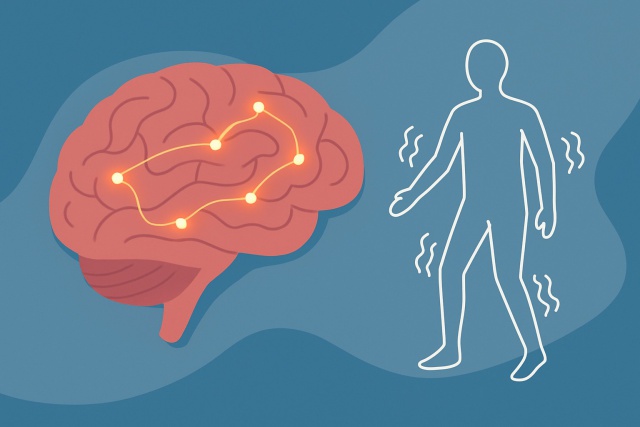
Understanding Functional Movement Disorder - Symptoms and Causes
Functional Movement Disorder causes involuntary abnormal movements without brain damage. Learn its s...
Impulse control disorders can be tricky to wrap your head around because they involve sudden behaviors that often hit like a storm out of nowhere—overwhelming and unpredictable. One that really grabs attention is Intermittent Explosive Disorder (IED). It’s marked by sudden bursts of intense anger or aggression that don’t seem to fit the situation. These explosive moments can take a serious toll not only on a person’s mental well-being but also on their relationships, job and overall quality of life.
Intermittent Explosive Disorder or IED is a mental health condition characterized by sudden intense bursts of aggressive behavior that can catch you off guard. The term "intermittent" hints that these outbursts pop up here and there, not all day long. "Explosive" paints a picture of how fast and fierce the anger can flare up. Clinically, IED is diagnosed when these aggressive reactions are out of proportion to what’s actually going on. These episodes often involve verbal fireworks like shouting or physical actions such as hitting or damaging property—definitely not your everyday anger.
Individuals typically exhibit repeated impulsive aggressive outbursts that feel wildly out of proportion to whatever set them off when diagnosed with IED.
IED doesn’t boil down to just one cause. Instead it usually springs from a mix of biological, psychological and environmental factors. Genetics might play a role along with imbalances in brain chemistry that affect how emotions are handled. Past trauma or ongoing stress can push someone closer to the edge. Having other mental health conditions often increases the risk too.
IED shakes up behavior with sudden, intense bursts of anger that can really throw daily life out of whack. Individuals dealing with this disorder often struggle to rein in their frustration and might act on impulse when these episodes hit. These reactions can take a toll on personal relationships, complicate work interactions.
People usually feel this odd mix of relief from all the tension that’s been building up and a hefty dose of regret or embarrassment that sneaks in right after.

IED can easily be mixed up with other mental health conditions such as mood disorders or personality disorders, since all of these can involve mood swings or aggressive behavior. IED really makes itself known through sudden, impulsive bursts of anger that don’t stick around and change the overall mood.
| Disorder | Primary Symptoms | Typical Triggers | Duration of Episodes | Treatment Approaches |
|---|---|---|---|---|
| Intermittent Explosive Disorder | Sudden, intense bursts of anger that can catch you off guard | Small frustrations | Can last anywhere from a few intense minutes up to several hours | Cognitive-behavioral therapy, medications, and good old-fashioned anger management techniques |
| Bipolar Disorder | Rollercoaster mood shifts swinging between mania and depression | Varies quite a bit; often stress or major life events | Episodes can stretch on from days to even weeks | Mood stabilizers, psychotherapy, and lifestyle tweaks to keep things on track |
| Borderline Personality Disorder | Strong, unstable emotions and rocky relationships that often feel like a whirlwind | A deep fear of abandonment | Episodes typically span hours to days | Dialectical behavior therapy alongside medications can really help |
| General Anger Issues | A persistent sense of irritation or simmering frustration that just will not quit | Long-term stressors that wear you down | Usually a constant presence | Anger management and stress reduction strategies are your best bet |
Diagnosing IED typically involves a mental health professional conducting a thorough evaluation, leaving no stone unturned. This process includes clinical interviews designed to paint a clear picture of how often those fiery outbursts occur and just how intense they can get. They’ll also dig into a detailed personal and family history, making sure to rule out any other medical or psychiatric issues that might be sneaking in.
When it comes to tackling Intermittent Explosive Disorder, there’s no one-size-fits-all playbook. A combination of strategies often does the trick, blending therapy, medication, and lifestyle tweaks. While it can feel like a rollercoaster, many find that a tailored approach helps smooth out the ride, making daily life a bit more manageable and predictable.
Treatment for IED usually involves a balancing act combining therapy, medication and lifestyle tweaks. These are all geared toward dialing down the frequency and intensity of explosive moments. Cognitive-behavioral therapy (CBT) often helps individuals spot their own thought traps and get a better handle on what sets them off. Medications can lend a hand by addressing chemical imbalances in the brain.
Sticking to treatment while relying on steady support from healthcare providers, family and peers really makes all the difference in managing IED.
Intermittent Explosive Disorder isn’t set in stone. With the right treatment and a solid support system, people can take back the reins and work toward meaningful recovery — there really is hope waiting just around the corner.
Living with IED disorder can be a real challenge day to day but thankfully some practical steps can take the edge off for both the individuals dealing with it and the people around them. It’s all about spotting early warning signs before things boil over. Working on smoother communication is easier said than done. Creating a supportive environment helps dial down triggers and fosters a sense of calm.

Functional Movement Disorder causes involuntary abnormal movements without brain damage. Learn its s...

Discover how malingering and factitious disorder differ fundamentally in motivation and clinical pre...

Language processing disorder impacts how children understand and use language. Learn to recognize ea...

Discover rare mental disorders that affect few but have profound impacts, covering symptoms, diagnos...